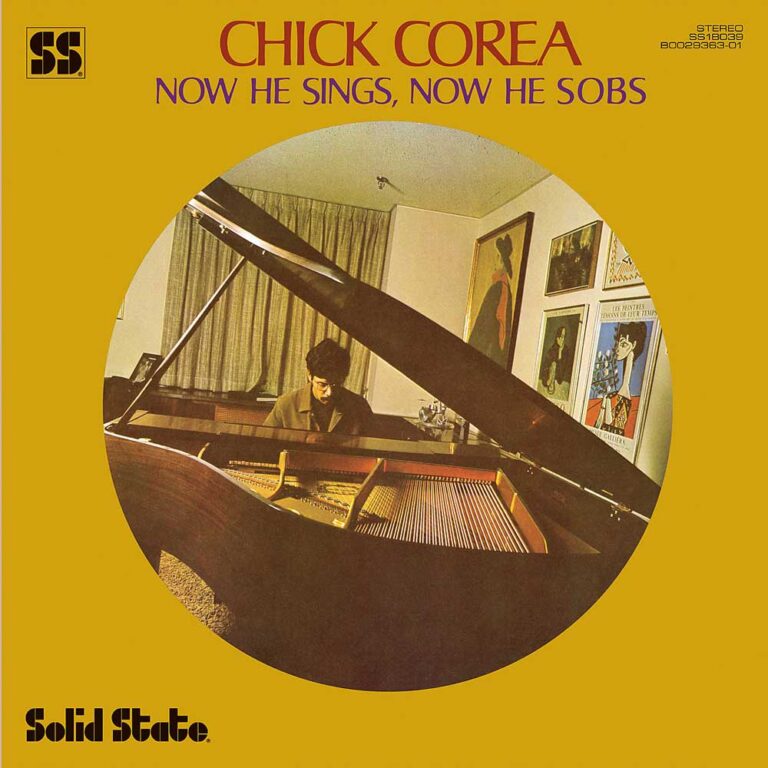It was 1968, a year notable for political upheaval as well as a time of rapid cultural evolution. The music world was experiencing its own revolutions, from rapid developments in the composition of pop music to Germany’s burgeoning experimental rock scene. The jazz scene was no different.
Pioneers of free jazz like Ornette Coleman and others were challenging jazz orthodoxies. Enter Chick Corea, who was about to produce an album that would shape what jazz piano could be and continues to be highly influential fifty years later.
Corea had been playing with artists such as Herbie Mann, Stan Getz, Sarah Vaughn and others since the early 1960s. He’d already released his debut “Tones for Joan’s Bones” in a quintet formation, but was now ready to move into different territory altogether.
A highly distinct composer, he possessed the ability to distil a vast breadth of influences and in the process create something new. He was known to be influenced by everything from the repetitive rhythmic patterns of Philip Glass and Steve Reich to composers like Bartok. He immersed himself in experimental music across the worlds of jazz, classical and beyond.
With a series of loose ideas, Corea entered A&R Studios New York across three magical days in March of that revolutionary year. At his side were Czech double bass supremo Miroslav Vitouš and the legendary drummer Roy Haynes. Their inspired playing would bring life, urgency and dynamism to the highly improvisational pieces that went on to comprise “Now He Sings, Now He Sobs”.
The album’s intriguing title was landed upon by Corea through his study of a range of religions and philosophies. At the time, he was reading the I Ching, an ancient Chinese text which contains a section entitled “Now He Sings; Now He Sobs – Now He Beats The Drum, Now He Stops”. He felt this chimed with the ability of music to evoke both joy and sadness. He was also drawn to the rhythmic structure of the words.
At the heart of the album are the two pieces named after that section of the I Ching – the album’s title track and its counterpart “Now He Beats The Drum, Now He Stops”. The former is a modal piece that sees Corea playing intricate arpeggios and creating an introspective melody as Vitouš provides nuanced but propulsive counterpoint on the bass while Haynes’ drumming manages to be driving, yet subtle. The latter track brings the improvisational flair of the three players to the fore, with Chick playing solo for nearly five minutes before being joined by his rhythm section to drive the piece to its heady conclusion.
The album has become a classic through redefining what a piano trio record can be. None of this could have been possible without the exploratory atmosphere that was created in the studio. Miroslav Vitouš has noted that “Chick’s compositions were very open”, adding that his approach allowed for “a lot of improvisation”. The creative freedom engendered by Chick’s way of working drove sonic exploration and helped create extraordinary interplay between the musicians. This is evident on tracks such as the multi-phased and intricate opener “Steps-What Was” and Matrix, with its bright and joyful piano-work and his almost telepathic communication with his rhythm section.
Over the years, Haynes spoke of those storied sessions and how “the chemistry was incredible”, adding that “we played like we’d been together forever”. He bounced off Corea’s unusual and inventive approach to composition, reflecting in a 2011 interview with The New York Times that “Chick’s music was challenging but I loved it… It was like a puzzle”.
“Now He Sings, Now He Sobs” is an album that sounds as fresh as the day it was recorded. Driven by emotive and beautiful melodies, it is possessed of an underlying experimentalism reflecting the influences and ideas that Corea surrounded himself with in that period of rapid political and cultural change. It is little wonder that luminaries such as Herbie Hancock, Keith Jarrett and Brad Mehldau have cited the album as a huge influence on the development of their own music.
With the spontaneity of the sessions captured masterfully, the three players delivered an album that has not only earned its place as one of the most influential piano trio albums of all time, but also as a landmark in modern jazz of any kind.
Read on…Herbie Hancock The Composer in Five Iconic Songs
Andrew Taylor-Dawson is an Essex based writer and marketer. His music writing has been featured in UK Jazz News, The Quietus and Songlines. Outside music, he has written for The Ecologist, Byline Times and more.
Header image: Chick Corea. Photo: Francis Wolff / Blue Note Records.



